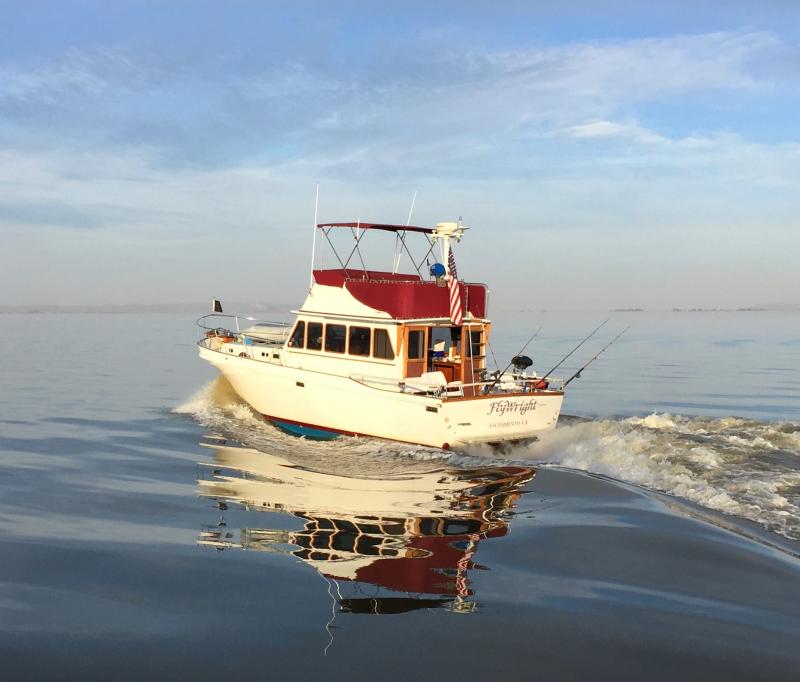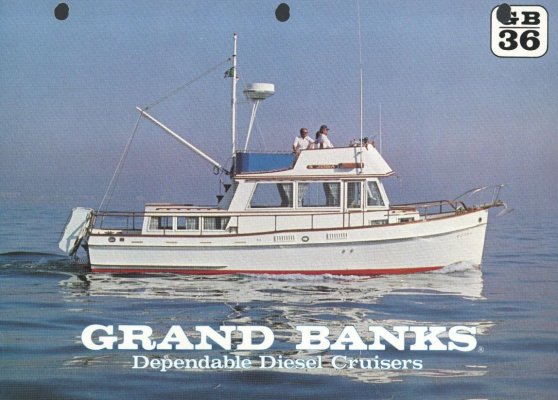Also consider that the most distinctive feature than makes a trawler a trawler is it's weight.
The fact that the recreational boating industry has, for marketing reasons, adopted the term "trawler" to describe a remarkably broad spectrum of powerboats means there is actually no correct definition of the word. Eric thinks it's defined by weight. The folks at Nordic Tug or Ranger Tug would disagree, as they consider their lighter, faster boats to be "trawlers," too.
There is only one definition of the word "trawler" that draws no arguments from anyone and that is that it's a type of fishing boat. Every other definition draws opposition from someone if not many someones.
Leaving aside the fishing bit, I don't use the term "trawler" in connection with recreational powerboats but if I did weight would not be part of the criteria in my mind for being this type of boat. I can see why Eric does and I don't fault him for it, but because the term has become so corrupted by using it to describe so many different types of vessels, I tend to think of the term as more the function of the boat rather than any one physical attribute.
In my opinion, the term "trawler" has become synonymous with the term "RV." RV encompasses a whole host of types and configurations. Trailers, fifth-wheels, single axle, tandem axle, tripple axle, pop-up trailers, and all the different classes of motorhomes. Out of all this, what is the one common denominator?
How it's used.
I think the situation is identical with boats and the term "trawler." It no longer defines a specific configuation or set of performance factors or physical characteristics. The marketing departments and ad agencies have seen to that.
What is the one common denominator that encompasses our 43 year old. twin-engine Grand Banks and the brand new Ranger Tug down the dock and a Nordhavn and a Bayliner 3888 and an American Tug and a Nordic Tug and a CHB and a Californian and Eric's single engine Willard and Mark's steel-hull, sail-assisted Coot, all of which are referred to as "trawlers" today?
Same as the RV. How it's used.
That's the only all-encompassing definition left now. Every other definition is open to argument. Eric says weight. A number of manufacturers whould disagree. Some say low speed. A number of manufacturers and owners would disagree. Some say physical appearance. Manufacturers and people with boats that don't look that way would disagree. Some say low fuel consumption. The owners of Grand Banks boats with big engines who like to cruise at 16-18 knots would disagree. Some say displacement hulls. People with semi-planing and planing hull boats would disagree.
Some might say range, and this is actually plausible as it ties in with how "trawlers" are used. So are terms like "comfortable," "good visibility," "good ride," and so on. But none of these terms describe a particular kind of boat, they describe the attributes one wants in a boat and there are lots of ways to get them.
The term I prefer for the type of boats most participants in this forum have is "cruiser," or as Eric llkes to say, "heavy cruiser." But these terms,too, are not definitions of physical or performance attributes but how a boat is used. You can cruse at 6 knots and 1.5 gph and you can cruise at 40 knots at 60 gph.
So when one sees the term "trawler" used in a manufacturer's sales brochures or ads, or applied to an ad on Yachtworld, or even as used by the members of this forum, just think "RV." You will be 100 percent correct every single time.






